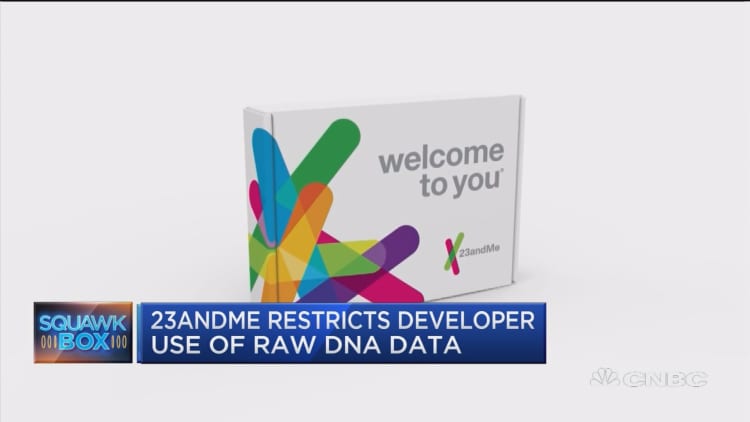The first time I took a $99 DNA test on Ancestry.com, I learned that my ancestors were once scattered across Europe. I had descendants from the Iberian Peninsula, which includes Spain and Portugal, and Scandinavia, as well as ties to Ashkenazi Jews from Eastern Europe.
That test was in 2017. But Ancestry emailed me this month to say it had a few updates to my report. I logged back into my account to find that I'm now mostly British, about one-fifth Jewish and basically nothing else. I never submitted another spit sample, so these new results were based on the same raw DNA data.
I, like the rapper 21 Savage, had become a lot more British.
My original report indicated that 8 percent of my ancestry came from Great Britain, but that number was now 71 percent. Iberia and Scandinavia no longer showed up.
So what happened?
According to Ancestry, two major things changed in the past year. The company updated its algorithm and added many more regions to its reports.
Ancestry said that it no longer looks at an individual user's DNA in isolation, but instead relies on genetic information from a big group of people with long family histories that trace to a specific place, like France or Britain.
Barry Starr, Ancestry's director of scientific communications, said comparing parts of a user's DNA with a so-called reference panel can produce "more accurate results."
Ancestry increased the number of regions in its report from 26 to 43, making results more granular. For example, I'm now 10 percent Germanic, while before I was 45 percent Western European.
23andMe, a rival in the space, made a similar change, introducing more regions and countries to its ancestry composition reports last year. The company is also working to improve its results for Asia and Africa, where there's less available data because fewer people have gotten DNA tests.
Even with these enhancements, ancestry is a complicated business with a lot of variability. Consider Europe, which has experienced centuries of wars and territorial takeovers. Areas that used to be in one country are now in another. The British Isles have experienced invasions by the Romans, Germanic people and Vikings.
Not an exact science
People who have used DNA tests are seeing this complexity in their reports.
Identical twins Charlsie and Carly Agro bought home kits from all the leading DNA-testing companies, including Ancestry and 23andMe, and mailed in a sample to each. The results varied across all of them.
The sisters also got slightly different results from each other, which shouldn't have happened. One twin apparently had Polish roots, while the other did not. The story was covered by Canadian broadcaster CBC, Charlsie's employer.
Starr admitted that ancestry testing isn't totally accurate, but he stressed that it's getting smarter over time and is generally "pretty positive," these days. Regarding the Agro sisters, he said that the companies reported almost the same results for each twin, with just slight variations.
Disparities between DNA testing companies exist because each is using genetic information from its own customers and publicly available databases. That means the data sets aren't exactly the same.
Just estimates
Still, I couldn't shake the feeling that there's a lot about me I still don't know, and the existing technology isn't ready to figure out. It was a strange experience to see my own results change so much in the past year. I had already talked to my family about where our Iberian ancestors may have lived, and now it turns out we might not have any.
Starr said that most users saw only small variations in their results, and most of the feedback suggests that customers think the updated reports are more accurate, given what they've learned of their heritage.
Mine also seemed more accurate. I understood my ancestry to be a mix of Eastern European and British. My surname "Farr" is of Anglo-Saxon origin, according to the Internet Surname Database, and was a nickname for a fierce or lusty man. I also know that my mother's ancestors on her mom's side were Polish Jews who emigrated to the U.S.
Scientists at DNA testing companies say that the algorithms are getting better.
"The algorithm uses computational shortcuts to find the most likely combination," said Yaniv Erlich, chief science officer for MyHeritage. "Think about it as climbing on Mount Everest. We want to get to the summit, meaning the best configuration, but we are unsure what's the best route."
Some people get updates that are slightly different from their original results, but for me "the algorithm took a step that put it on a different path," Erlich said. "The take home message is that these estimates are... estimates. They should be the starting point of a genealogical inquiry. Not the final answer," he said.



